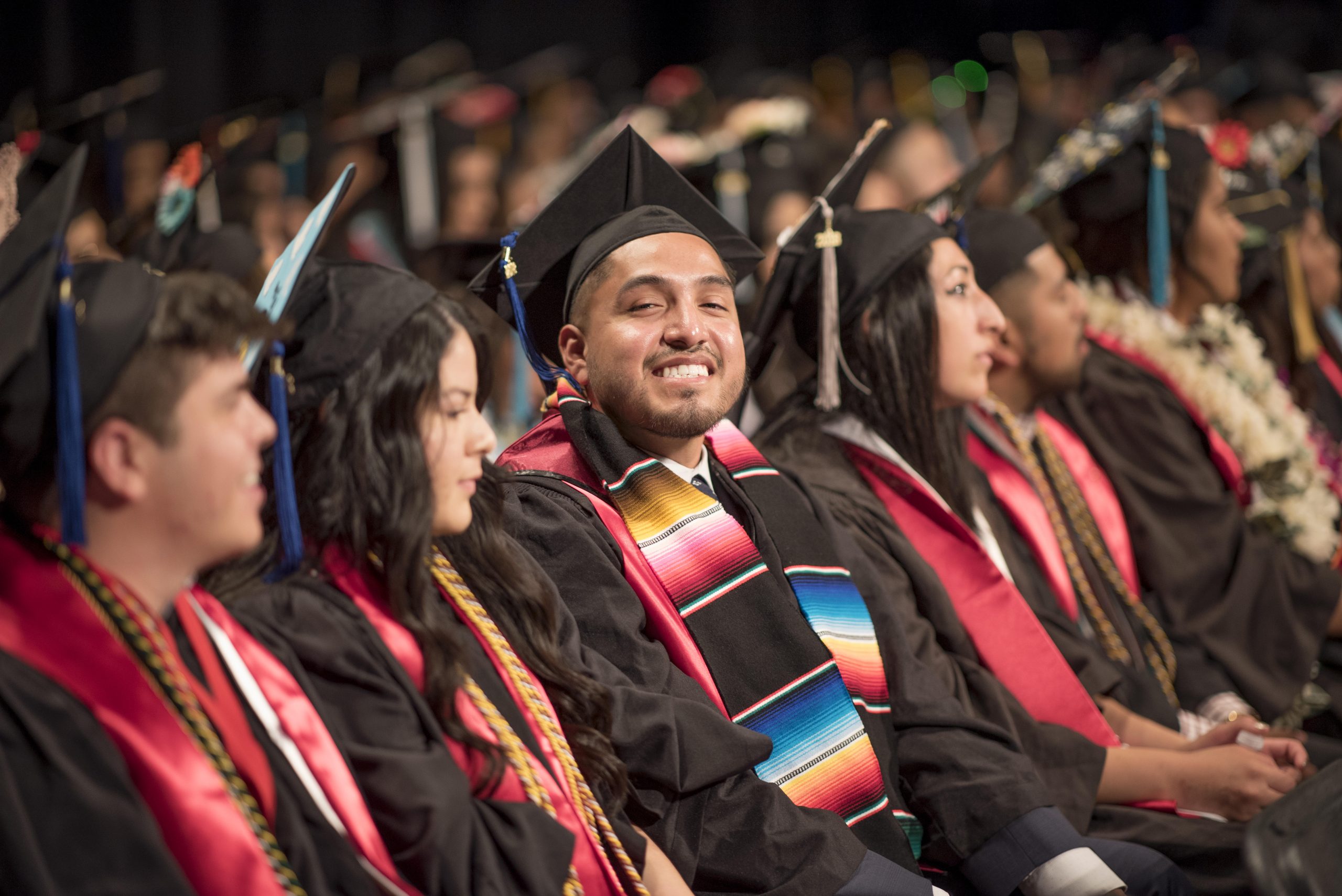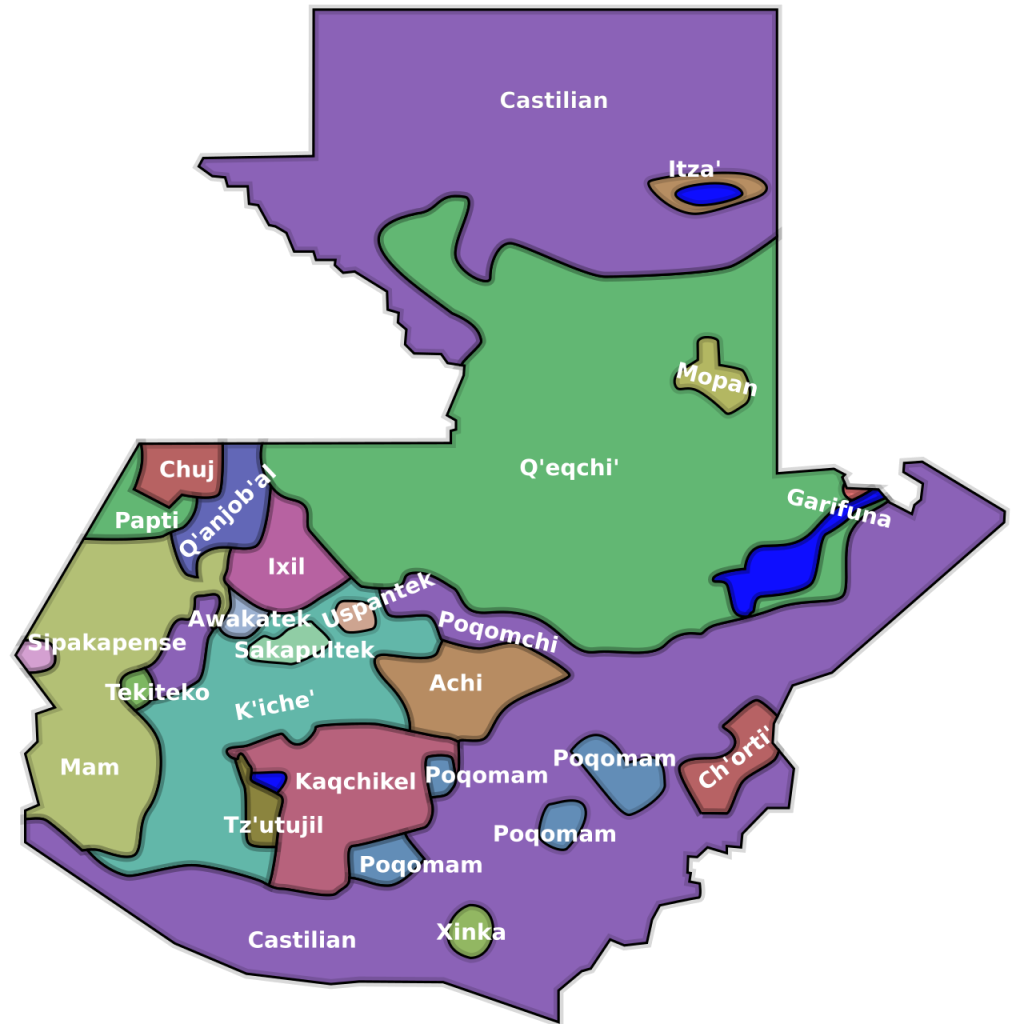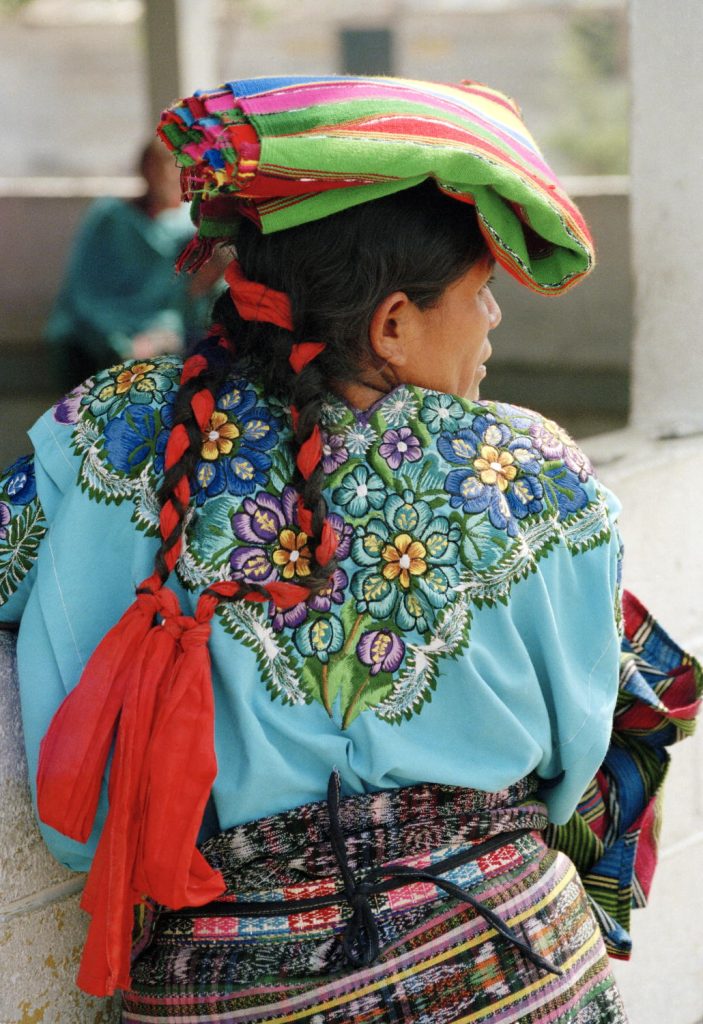9 Experiences of Guatemalan Students and Their Search for The American Dream
by Belén Zúñiga

According to the Pew Research Center, Guatemalans are the sixth largest population of Latin American origin in the US (Moslimani et al., 2021). The first significant wave of immigration from Guatemala to the US began in the 1970s due to economic challenges, the massive earthquake of 1976, and political violence and repression throughout Central America. Since then, and in pursuit of the American dream, economic stability, education, and security, Guatemalans have been making the US their home. Beginning in the late 2010s, another significant wave of immigration from Guatemala to the US occurred. Economic opportunities, family reunification, declining agricultural jobs in Guatemala, the aftermath of the COVID-19 pandemic, and threats of violence, particularly from gangs, have been identified as push and pull factors that have contributed to this large and ongoing second wave of migration (Bermeo et al., 2022). From 2020 to 2021, for example, the Guatemalan population in the US grew from 410,000 to 1.8 million, a 336% increase in just one year (Moslimani et al., 2021).


As the Guatemalan population continues to grow in the US, it means there is also an increase in Guatemalan heritage students in public schools. Yet despite the large and growing number of Guatemalan students, little is known about the educational experiences and outcomes of this student group. Their experiences and outcomes are often obscured by research focusing on the Latines Americans of Central America. However, the Guatemalan experience in the US is quite unique. For example, differing from other countries in Latin America, Guatemala is well-known for its Indigenous communities and language diversity, which includes over 25 languages spoken, including 22 Mayan dialects. The country, similar in size to Tennessee, has 22 regional departments, each with unique cultural traditions. With the goal of amplifying the experiences of Guatemalan heritage students in US schools, this resource guide provides insights into the experiences of Guatemalan students in the US.
Part I: Annotated Bibliography
![]() Ek, L.D. “‘ Allá En Guatemala ’: Transnationalism, Language, and Identity of a Pentecostal Guatemalan-American Young Woman.” The High School Journal 92, no. 4 (April 2009): 67–81. https://doi.org/10.1353/hsj.0.0033.
Ek, L.D. “‘ Allá En Guatemala ’: Transnationalism, Language, and Identity of a Pentecostal Guatemalan-American Young Woman.” The High School Journal 92, no. 4 (April 2009): 67–81. https://doi.org/10.1353/hsj.0.0033.
“Allá in Guatemala” provides a comprehensive longitudinal case study of one second-generation Guatemalan American young woman. The researcher, Ek, documents Amelia (a pseudonym) as she goes through her adolescent years and into college. The researcher uses the lens of transnationalism through her research because the young girl can travel between Guatemala and the US from the age of 6 months. Amelia’s life provides us with a glimpse into what it is like to live on the border of both cultures. This study sheds light on an internal conflict that sometimes children of immigrants have on where they belong and identify with. This can sometimes be difficult when living in the US and still holding on to our customs and ways of being, which are either amplified or silenced depending on where they are geographically located. This paper also highlights questions of social hierarchies among Guatemalan communities, which many people are not aware of. In particular, the majority of Indigenous people continue to be at the bottom of Guatemala’s social hierarchies, even though they are the original people and caretakers of these lands. One aspect that many educators should keep in mind and help support is the importance of travel back and forth between the US and their parents/’ native land. It helps to maintain a connection with their culture and language.
![]() Granich, Steven. “Culturally Competent Field Education Practice with Guatemalans.” Field Educator 3, no. 2 (Fall 2013). https://www.proquest.com/docview/1561335191/abstract/FA50835E31AC491APQ/1.
Granich, Steven. “Culturally Competent Field Education Practice with Guatemalans.” Field Educator 3, no. 2 (Fall 2013). https://www.proquest.com/docview/1561335191/abstract/FA50835E31AC491APQ/1.
The study addresses the political, religious, and societal challenges faced by Guatemalans before their emigration. Written through a social work lens, Granich offers some cultural insights to keep in mind to serve Guatemalan clients better. The article also discusses the difficulties Guatemalan children may face before entering the US as students. A limitation of this source is that the author largely focuses on the challenges of living in Guatemala and being Guatemalan. For example, the author implies that all Guatemalans are “forced to immigrate illegally” (p. 3), which is oversimplified and inaccurate. Furthermore, the author portrays all Guatemalans as a single homogeneous group despite Guatemala consisting of 22 different districts, each with its customs and traditions. One point that this research paper does point out is that a lot of Guatemalan children have to learn at an early age how to balance trying to bring in money for the family and going to school, if they are allowed and given the opportunity. This helps provide some context of what could potentially explain some of the academic hardships some Guatemalan children can face.
![]() Herrera-Pazmiño, Alma. “My Canción.” Harvard Educational Review 81, no. 3 (Fall 2011): 578–80. https://www.proquest.com/docview/896133337/abstract/57AD1B88CF2E48D1PQ/1.
Herrera-Pazmiño, Alma. “My Canción.” Harvard Educational Review 81, no. 3 (Fall 2011): 578–80. https://www.proquest.com/docview/896133337/abstract/57AD1B88CF2E48D1PQ/1.
This testimonio gives us a first-hand account of a Guatemalan middle school student’s journey to learn English. It describes some of the emotional difficulties, such as missing home, family, and friends, and the desire to make their parents proud. Additionally, it demonstrates some of the struggles of being immersed in an education system that may not have the tools and resources to communicate with students. The student’s account of learning English shows how something as simple as going to the store and being able to buy a soda can be taken for granted. Further, students have to work through the emotional hardship, sometimes alone, when learning a new language. This testimonio emphasizes that these students want to be seen and not “fall into the shadows of nobodies” (p. 579).
![]() Nichols, B., Umana, K., Britton, T., Farias, L., Lavalley, R., & Hall-Clifford, R. (2017). Transnational Information Politics and the “Child Migration Crisis”: Guatemalan NGOs Respond to Youth Migration. Voluntas: International Journal of Voluntary and Nonprofit Organizations, 28(5), 1962–1987. https://doi.org/10.1007/s11266-017-9890-9 or http://www.jstor.org/stable/44668927.
Nichols, B., Umana, K., Britton, T., Farias, L., Lavalley, R., & Hall-Clifford, R. (2017). Transnational Information Politics and the “Child Migration Crisis”: Guatemalan NGOs Respond to Youth Migration. Voluntas: International Journal of Voluntary and Nonprofit Organizations, 28(5), 1962–1987. https://doi.org/10.1007/s11266-017-9890-9 or http://www.jstor.org/stable/44668927.
This paper discusses the political issues and historical background that have led to increased migration from Guatemala, mainly focusing on the migrant crisis of 2014. During this time, 25% of unaccompanied minors were coming from Guatemala. This article examines how the media had amplified this as a “crisis” and how NGOs (Non-Governmental Organizations), often the “information brokers” (p.1968) between countries, used the media to not only meet their own political and funding goals while needing to advocate against how the media depicted the issues of Guatemalan migrant children. The article highlights some of Guatemala’s history that led to many wanting to leave. Further, the researchers provide insights on how, unlike other Central American countries, Guatemalans are not typically given asylum, even though similar issues are occurring in Guatemala compared to other Central American countries that are granted asylum.
![]() Silva, Michelle A., Jennifer McQuaid, Oscar Rojas Perez, and Manuel Paris. “Unaccompanied Migrant Youth from Central America: Challenges and Opportunities.” Current Opinion in Psychology 47 (October 1, 2022): 101415. https://doi.org/10.1016/j.copsyc.2022.101415.
Silva, Michelle A., Jennifer McQuaid, Oscar Rojas Perez, and Manuel Paris. “Unaccompanied Migrant Youth from Central America: Challenges and Opportunities.” Current Opinion in Psychology 47 (October 1, 2022): 101415. https://doi.org/10.1016/j.copsyc.2022.101415.
This article focuses on some risk factors that newly immigrated children from the Northern Triangle (Guatemala, Honduras, El Salvador) might face as they try to resettle in the US Trump’s 2018 Zero Tolerance policy. The article brings to light the lack of compassion and safety for these minors because this policy considers all children to be unaccompanied, even if they had a caregiver with them when crossing the border. According to the authors, “These measures were in direct opposition to Article 9 of the United Nations Convention on the Rights of the Child, ratified by the United Nations in 1989 and signed by every nation except the USA” (p. 3). In sum, the researchers highlight decades-long systemic problems that should have been addressed well before the Trump Administration came into power. The authors also offer valuable insights and guidance on supporting unaccompanied minors entering the US. They emphasize the importance of providing access to culturally and linguistically affirming health and mental health services, as many of these minors are grappling with a wide range of emotions due to being separated from their families. Further, this research brings to light how schools, caregivers, and foster parents who are caring for these unaccompanied minors can facilitate their well-being. What is highlighted in the research is the lack of policies in place to protect these children from being separated from their caregivers when crossing the border.
Part II: Popular Sources
![]() Dreier, Hannah, and Kirsten Luce. “Alone and Exploited, Migrant Children Work Brutal Jobs Across the U.S.” The New York Times, February 25, 2023, sec. U.S. https://www.nytimes.com/2023/02/25/us/unaccompanied-migrant-child-workers-exploitation.html.
Dreier, Hannah, and Kirsten Luce. “Alone and Exploited, Migrant Children Work Brutal Jobs Across the U.S.” The New York Times, February 25, 2023, sec. U.S. https://www.nytimes.com/2023/02/25/us/unaccompanied-migrant-child-workers-exploitation.html.
This article focuses on the exploitation of Guatemalan children. As presented by reporters, some as young as 12 are working in the factories, facing adult responsibilities as minors. Many children, for example, are not able to attend school because they are the sole economic providers for their families in Guatemala.
![]() Dissard, Jean Michel & Peng, Gitte (Directors). (2013). I Learn America | Kanopy [Video recording]. New Day Films. https://www.kanopy.com/en/product/175810?vp=umb
Dissard, Jean Michel & Peng, Gitte (Directors). (2013). I Learn America | Kanopy [Video recording]. New Day Films. https://www.kanopy.com/en/product/175810?vp=umb
I Learn America follows the stories of students in the International High School in Brooklyn, New York City. One student, Brandon, is a 16-year-old Guatemalan high school student who crossed the border alone to go live with his mother, whom he had not seen in ten years. The documentary shows his emotional struggles of trying to keep up with school, but still missing Guatemala. The documentary follows Brandon’s High School journey until he is told to drop out by his stepdad since he wasn’t keeping up with his studies, and Brandon concludes that he would have been better off staying in Guatemala.
International Work Group for Indigenous Affairs. (2024). Indigenous Peoples in Guatemala. https://www.iwgia.org/en/guatemala.html
Published by The International Work Group for Indigenous Affairs (IWGIA), a global human rights organization dedicated to promoting and defending Indigenous Peoples’ rights, this guide provides important insights on the state of Guatemala’s Indigenous communities, including current issues essential to securing Indigenous rights in Guatemala and beyond. This information is vital as almost half of Guatemalans identify as members of Indigenous communities.
Marroquin, Gilda Temaj. “From Guatemala to a U.S. University: My American Dream.” https://news-decoder.com/. https://news-decoder.com/guatemala-american-dream/.
This reflection discusses a young woman’s personal experiences of wanting to leave Guatemala to find a better future and help her family. Gilda Temaj Marroquin tells her story of wanting to study, but in her village in Guatemala, men and women were not treated equally. Men were allowed to study, while women were expected to get married and start a family. She convinces her father to loan her the money to pay a “Coyote” who helped to be able to cross the border and join her brother in San Francisco, where she finished High School and was able to go on to college.
Moslimani, Mohamad, Luis Noe-Bustamante, and Sono Shah. “Facts on Hispanics of Guatemalan Origin in the United States, 2021.” Pew Research Center’s Hispanic Trends Project (blog). Accessed February 23, 2024. https://www.pewresearch.org/hispanic/fact-sheet/us-hispanics-facts-on-guatemalan-origin-latinos/.
This Pew Institute fact sheet presents a statistical profile of Guatemalans in the US. Detailed information on the socio-economic status, educational attainment, age, language abilities, as well population growth projections, among other factoids, are presented.
Nugent, C. (2022, April 13). Inside the Effort to Turn Guatemala’s Huge Flow of Remittances into Lasting Change. TIME. https://time.com/6166459/guatemala-migration-economy-remittances/
Every year, thousands of migrants come to the US from Guatemala. Those here work to send back money to their family in what is known as remittances. In 2021, 15.3 billion dollars worth of remittances made their way to Guatemala, adding up to 17.8% of the country’s economy. This article talks about the efforts that some Guatemalans are making to help improve their community’s lives with the remittances they receive, such as starting businesses, providing job opportunities in the community, and keeping more people from leaving the country.
Part III: Policies, Practices, Programs
Casa Guatemala. “Casa Guatemala.” https://www.instagram.com/casaguateboston/
Guatemalan community leaders founded this organization to help preserve Guatemalan culture in the US. The organization is located in Waltham, Massachusetts, one of the most Guatemalan-populated cities in the state. It hosts many cultural events and provides student support.
“High School Completers” Tuition Equity Law
Massachusetts Department of Higher Education. “Celebrating Tuition Equity for Massachusetts Students.” Accessed February 27, 2024. https://www.mass.edu/tuitionequity/home.asp.
This law allows students who are undocumented the opportunity to afford college in Massachusetts. Undocumented students who have attended a Massachusetts High School for more than three years can apply to college with in-state tuition rates and state financial aid. This is one, of similar laws, across the nation, that support the educational needs of undocumented students.
Christopher Marin (center) and fellow students are celebrated during the Latinx graduation celebration in the Laxson Auditorium on Saturday, May 19, 2018 in Chico, California. Photo by Jessica Bartlett/University Photographer/CSU Chico. Flickr. All Rights Reserved, image used under conditions of Fair Use, for educational purposes only.A full list of references can be found in the References (by Chapter) section.
We would love to hear from you?
Do you have suggestions on how we can improve this chapter?
Would you like to become a contributor?
We welcome all feedback. Simply complete this quick two-minute feedback form and help us improve our work.
Media Attributions
- Smiling Latine Graduate © Jessica Bartlett/University Photographer/CSU Chico is licensed under a All Rights Reserved license
- Languages of Guatemala © Chabacano is licensed under a CC BY-SA (Attribution ShareAlike) license
- Mayan Woman, Guatemala © UN Photo/John Olsson is licensed under a CC BY-NC-ND (Attribution NonCommercial NoDerivatives) license
